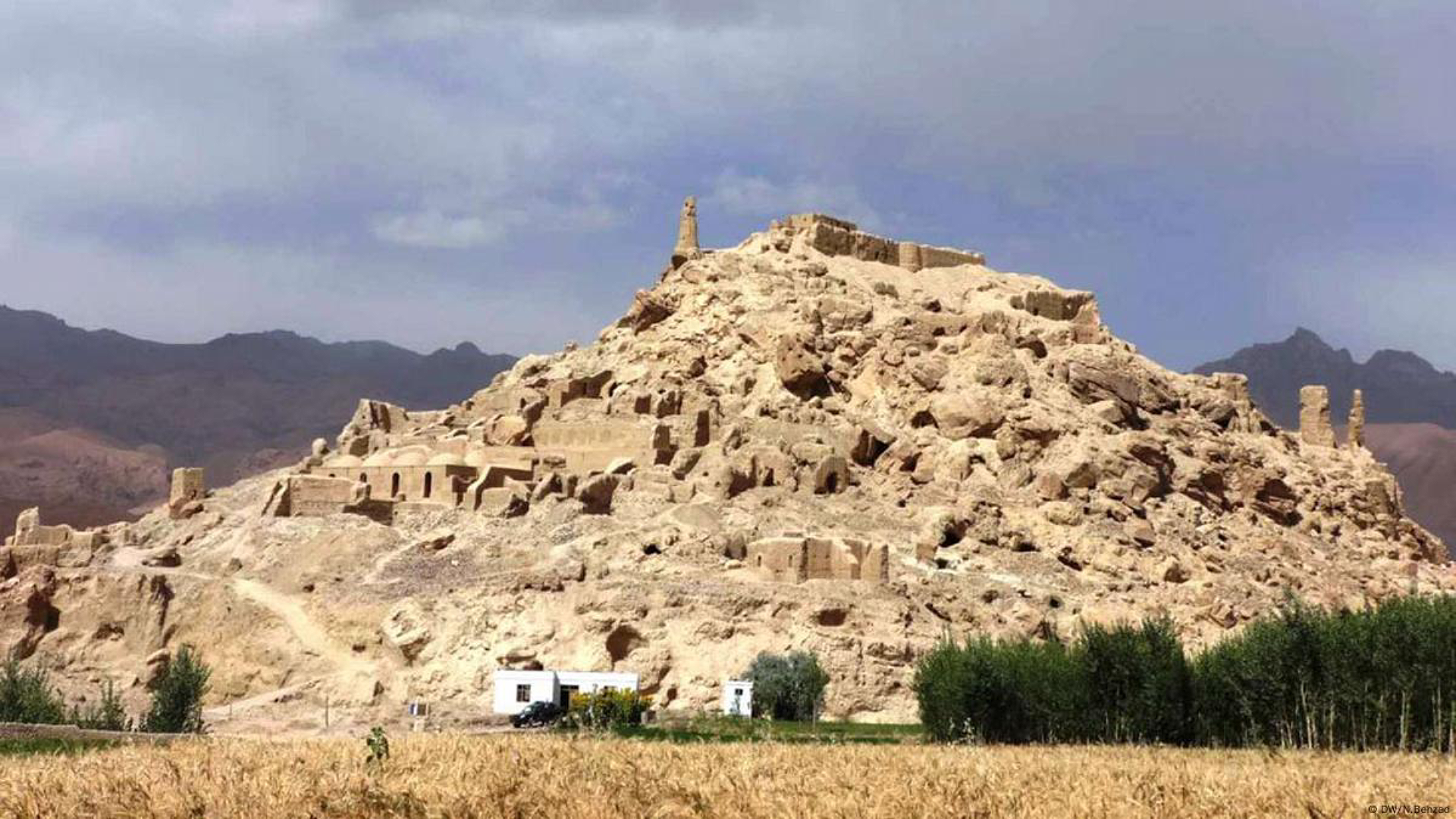CIVILISATIONS TIMELINE
☼ Prehistoric
:(100000 BCE - 3000 BCE)
☼ Ariana
:(3500 BCE - 1500 BCE)
☼ Indus Valley
:(3300 BCE - 1300 BCE)
☼ Helmand
:(3200 BCE - 1800 BCE)
☼ Oxus (BMAC)
:(2300 BCE - 1700 BCE)
☼ Achaemenid
:(550 BCE - 330 BCE)
☼ Greco-Bactrian
:(250 BCE - 125 BCE)
☼ Gandhara
:(0 CE - 400 CE)
☼ Kushan
:(30 CE - 375 CE)
☼ Sassanian Empire
:(224 CE - 651 CE)
☼ Hephthalites
:(400 CE - 500 CE)
☼ Islamic Caliphate
:(600 CE - 800 CE)
☼ Samanid dynasty
:(819 CE - 999 CE)
☼ Tahirid dynasty
:(821 CE - 873 CE)
☼ Saffarid dynasty
:(861 CE - 1003 CE)
☼ Ghurid Empire
:(879 CE - 1215 CE)
☼ Ghaznavid Empire
:(971 CE - 1186 CE)
☼ Delhi Sultanate
:(1206 CE - 1526 CE)
☼ Timurid dynasty
:(1220 CE - 1500 CE)
☼ Mughol dynasty
:(1526 CE - 1858 CE)
☼ Durrani empire
:(1747 CE - 1826 CE)
☼ Barekzai dynasty
:(1826 CE - 1929 CE)
☼ Mohamadzai dynasty
:(1929 CE - 1978 CE)
☼ Present
:(1929 CE - 2025 CE)
Gholghola City

Registration :
REG-c2bf9bc93bf24d81
Name of the site:
Gholghola City
Site type :
Ancient city
Location :
Bamyan،
Bamyan
Discovery date :
01 January 1950
Discovered by:
Afghan and French archaeologists team
Civilisation Era:
Ghurid Empire
879 CE - 1215 CE :
Archaeological Era :
Historical Era,
Post-Classical Age
Historical Era :
Islamic Period
Researcher:
Saif Fazel
Last update :
01 January 1950
Gholghola City:
Gholghola City is one of Afghanistan's most important and historical archaeological sites, located in the province of Bamyan. This ancient city, situated near the famous Buddha statues of Bamyan, holds significant historical value and strategic importance, making it one of Afghanistan's prominent cultural and tourist attractions.
Historical Background:
- Establishment Period: Gholghola City was established during the Ghaznavid and Ghurid eras as a centre for trade and military operations.
- Mongol Invasion: In the 13th century, the city was destroyed by Genghis Khan. According to historical accounts, Genghis Khan obliterated the city due to the fierce resistance of the Bamyan people against the Mongols. The name "Gholghola," meaning "City of Tumult," reflects this tragic event.
Architectural Features:
- Forts and Towers: The remains of military forts and towers highlight the city’s strategic role throughout different historical periods.
- Mud-brick Houses: The mud-brick houses and narrow alleyways that still exist are examples of the traditional and simple architecture of that time.
- Geographical Location: The city was built on a high hill, providing a vantage point to oversee the surrounding areas.
Cultural Importance:
- Symbol of Resistance: Gholghola City is a symbol of the Bamyan people's resistance against the Mongol invasions.
- Tourist Attraction: This ancient site is a significant destination for both domestic and international tourists interested in Afghanistan’s history.
- UNESCO World Heritage Site: Due to its historical and cultural significance, Gholghola City is listed as a UNESCO World Heritage Site.
Challenges and Opportunities:
- Preservation and Restoration: Many parts of the city require restoration and preservation due to years of neglect and natural decay.
- Tourism Potential: Investing in tourism can help promote this historical site and share its rich legacy with the world.
Gholghola City stands as a testament to Afghanistan's tumultuous yet rich history, continuing to tell stories of resilience, culture, and civilisation.
Images / Maps credits:
- https://commons.wikimedia.org/wiki/File:%D8%B4%D9%87%D8%B1_%D8%BA%D9%84%D8%BA%D9%84%D9%87.jpg